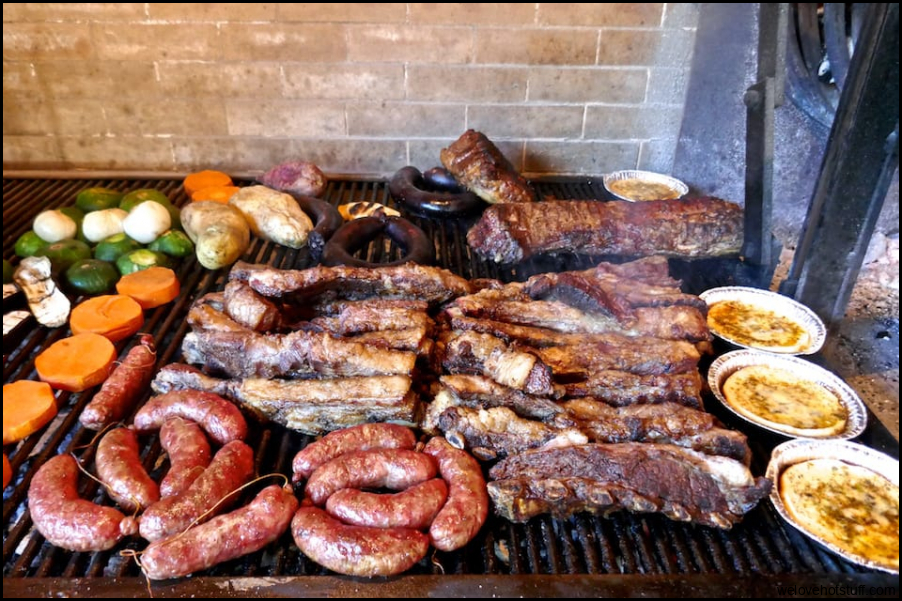Argentina, a land of rich cultural diversity and tantalizing flavors. As I embarked on a culinary exploration of this vibrant country, I was immediately captivated by the distinctive spices and ingredients that define Argentine cuisine. Join me on a spice quest as we unravel the flavor mysteries that make this cuisine truly unique.
The Essence of Argentine Cuisine
Spice Quest: Unraveling the Flavor Mysteries of Argentine Cuisine
Argentine cuisine is an amalgamation of indigenous traditions, European influences, and immigrant contributions. From the pampas to the Patagonian region, each area boasts its own culinary delights rooted in history and local produce.
Mate: The Beloved Beverage
Our spice journey begins with mate, Argentina’s beloved traditional beverage. Derived from dried yerba mate leaves, this herbal infusion provides a powerful burst of flavor and caffeine boost. The brewing process involves steeping the leaves in hot water using a specialized gourd called a calabash and sipped through a metal straw known as a bombilla.
Beyond its energizing properties, mate carries an earthy taste with underlying notes of grassiness and bitterness. Its robust flavor often serves as a perfect accompaniment to sweet pastries or empanadas.
Chimichurri: A Zesty Culinary Delight
No exploration of Argentine cuisine would be complete without mentioning chimichurri. This iconic sauce is renowned for its vibrancy and versatility—it can elevate any dish it accompanies. While various versions exist across Argentina, chimichurri typically consists of parsley, garlic, vinegar or lemon juice, olive oil, oregano, red pepper flakes (known as ají molido), and a touch of salt.
The marriage of these ingredients results in a tangy, herbaceous, and slightly spicy flavor profile. Whether drizzled over grilled steak, roasted vegetables, or used as a marinade, chimichurri adds a burst of freshness that enhances the overall dining experience.
Exploring Argentine Spices
Gaucho’s Secret: Bold Flavors of the Asado
A quintessential Argentine culinary experience is indulging in an asado—a traditional barbecue feast. The secret to the intense flavors lies in the meticulous selection and application of spices.
The gaucho’s arsenal comprises various spices, including pimentón (smoked paprika), cumin seeds, coriander seeds, dried oregano leaves (often referred to as oreganito), and black pepper. These seasonings come together to create an aromatic rub that penetrates the meat during grilling.
As the meat slowly cooks over open flames, it absorbs the essence of these spices while retaining its juiciness. The result is a succulent ensemble of smoky and robust flavors that will leave your taste buds yearning for more.
The Subtle Heat of Ají Amarillo
Adding a touch of heat to Argentine dishes is ají amarillo—a vibrant yellow chili pepper with origins tracing back to Peru but widely used in Argentine cuisine. This pepper imparts a unique fruity flavor with subtle floral undertones and moderate spiciness.
Ají amarillo can be found in various forms—fresh, dried, powdered or even as a paste. Its versatility allows it to enhance soups, stews (locro), empanada fillings, or simply add complexity to sauces like salsa criolla.
The Aromas of Argentine Desserts
Dulce de Leche: The Sweet Elixir
No exploration of Argentine gastronomy is complete without savoring the delightfully indulgent dulce de leche. This thick caramel-like spread, made from condensed milk, sugar, and vanilla essence, is a staple in countless Argentine sweets.
With a rich and creamy texture combined with a luscious sweetness, dulce de leche forms the heart and soul of alfajores (a popular cookie sandwich), pancakes (panqueques con dulce de leche), pastries (facturas), and more.
Mate Cocido: Warming Herbal Infusion
While we mentioned mate as a traditional beverage earlier on our spice quest, mate cocido deserves its own mention as well. This comforting drink is similar to tea but prepared with toasted mate leaves instead.
Mate cocido boasts an invigorating aroma akin to roasted herbs with subtle notes of bitterness. Enjoyed during chilly winter days or as an accompaniment to breakfast, this herbal infusion provides warmth and comfort.
Captivating Your Palate

8 Popular Argentinian Foods That Will Tantalize your Tastebuds …
In conclusion, Argentine cuisine not only satisfies the appetite but also captivates all five senses. From the stimulating flavors of mate to the vibrant zing of chimichurri and mouthwatering spices used in asados, each bite takes you on a unique journey through Argentina’s culinary landscape.

17 Delicious Argentine Food Dishes You Should Be Eating